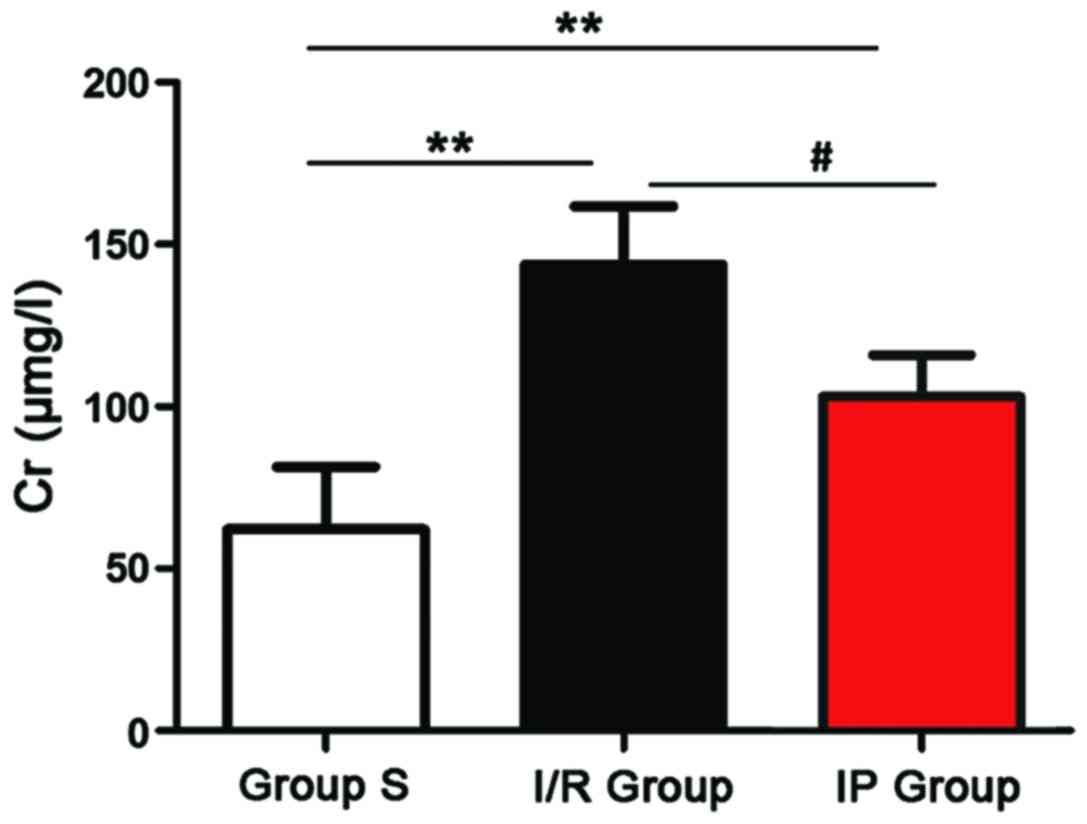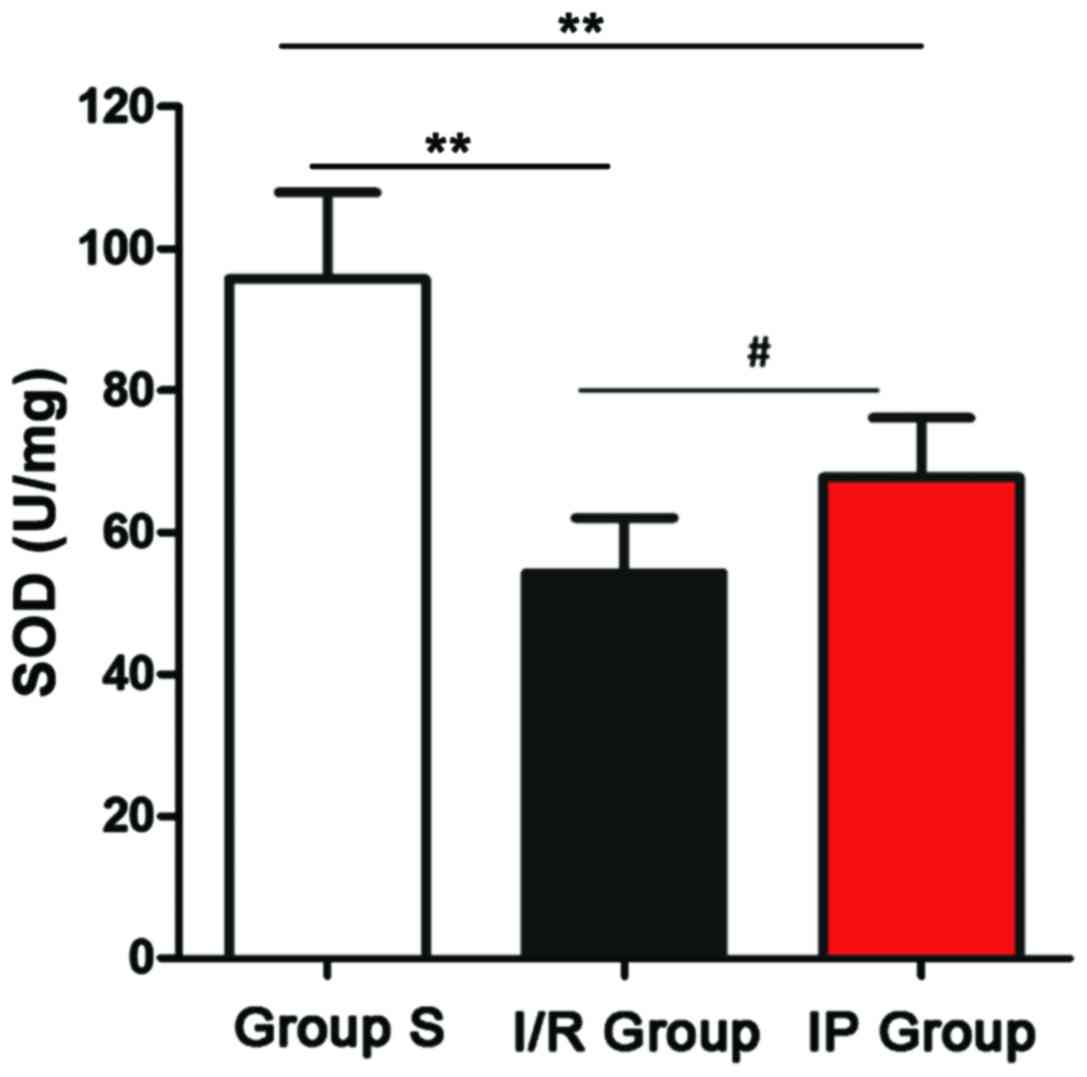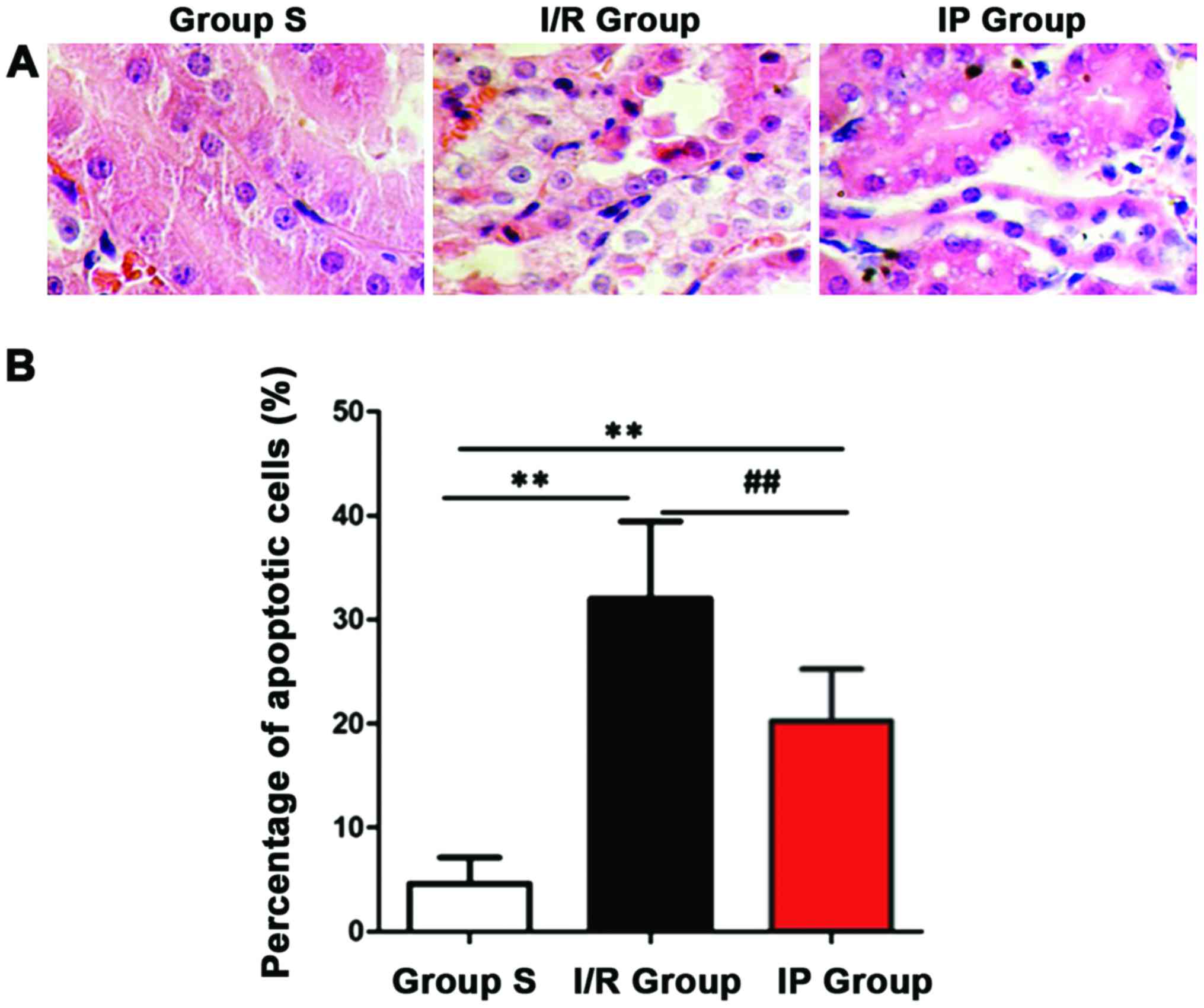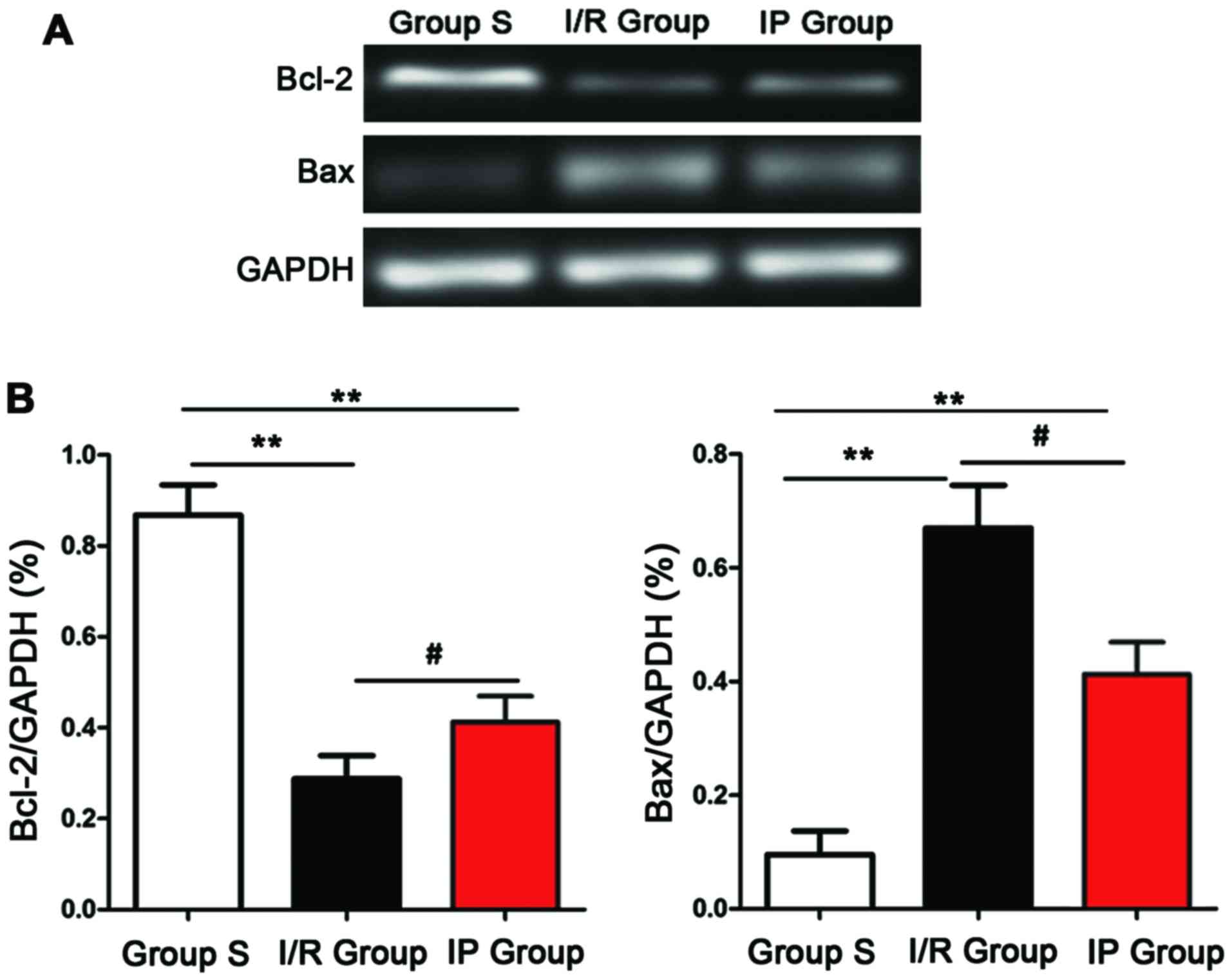The protective effects of ischemic preconditioning on rats with renal ischemia-reperfusion injury and the effects on the expression of Bcl-2 and Bax
- Authors:
- Published online on: August 28, 2017 https://doi.org/10.3892/etm.2017.5047
- Pages: 4077-4082
-
Copyright: © Shen et al. This is an open access article distributed under the terms of Creative Commons Attribution License.
Metrics:
Total
Views: 0 (Spandidos Publications: | PMC Statistics:
)
Total PDF Downloads: 0 (Spandidos Publications: | PMC Statistics:
)
Abstract
The aim of the present study was to investigate the protective effects of ischemic preconditioning on rats with renal ischemia-reperfusion injury and the effects on the expression of Bcl-2 and Bax. Thirty-six SD rats were randomly divided into three groups (n=12) including sham operation (S) group, ischemia-reperfusion group (I/R) group and ischemic preconditioning (IP) group. After anesthesia with intraperitoneal injection of chloral hydrate, bilateral renal pedicles were clipped for 45 min, followed by perfusion for 6 h to establish the I/R model. Both kidneys in rats of S group were separated and exposed for 45 min, but renal pedicles were not clipped. In IP group, bilateral renal pedicles were clipped for 5 min, followed by perfusion for 5 min, this procedure was repeated 3 times. Then bilateral renal pedicles were clipped for 45 min, followed by perfusion for 6 h. Blood samples were collected and rats were sacrificed to collect renal tissue. Levels of serum creatinine (Cr) and blood urea nitrogen (BUN) were measured. Activity of superoxide dismutase (SOD) was measured by xanthine oxidase assay. Degree of renal injury was evaluated by H&E staining. TUNEL kit was used to detect the number of apoptotic cells in renal tissue. Expression levels of Bcl-2 and Bax were detected by semi-quantitative PCR and western blot analysis at mRNA and protein levels, respectively. Results showed that levels of Cr and BUN in I/R and IP groups were significantly higher than those in S group, and levels of Cr and BUN in I/R group were significantly higher than that in IP group (p<0.05). Activity of SOD in I/R group and IP group were significantly lower than those in S group, and activity of SOD in I/R group were significantly lower than those in IP group (p<0.05). H&E staining showed that, compared with S group, renal injury in the I/R and IP groups was more serious than that in the S group, and I/R group was more serious than the IP group (p<0.05). TUNEL apoptosis assay showed that number of apoptotic cells in IP and I/R groups were significantly higher than that in the S group (p<0.01). Semi-quantitative PCR and western blot analysis showed that, compared with the S group, expression levels of Bcl-2 mRNA and protein were significantly decreased, expression levels of Bax mRNA and protein were significantly increased, and the ratio of Bcl-2/Bax was significantly decreased in the IP and I/R groups (p<0.01). Compared with the I/R group, expression level of Bcl-2 was significantly increased, the level of Bax was significantly deceased, and the ratio of Bcl-2/Bax was significantly increased in the IP group (p<0.01). As a result, ischemic preconditioning can protect rats with renal ischemia-reperfusion injury possibly by increasing the expression level of Bcl-2 and decreasing the expression level of Bax.

















